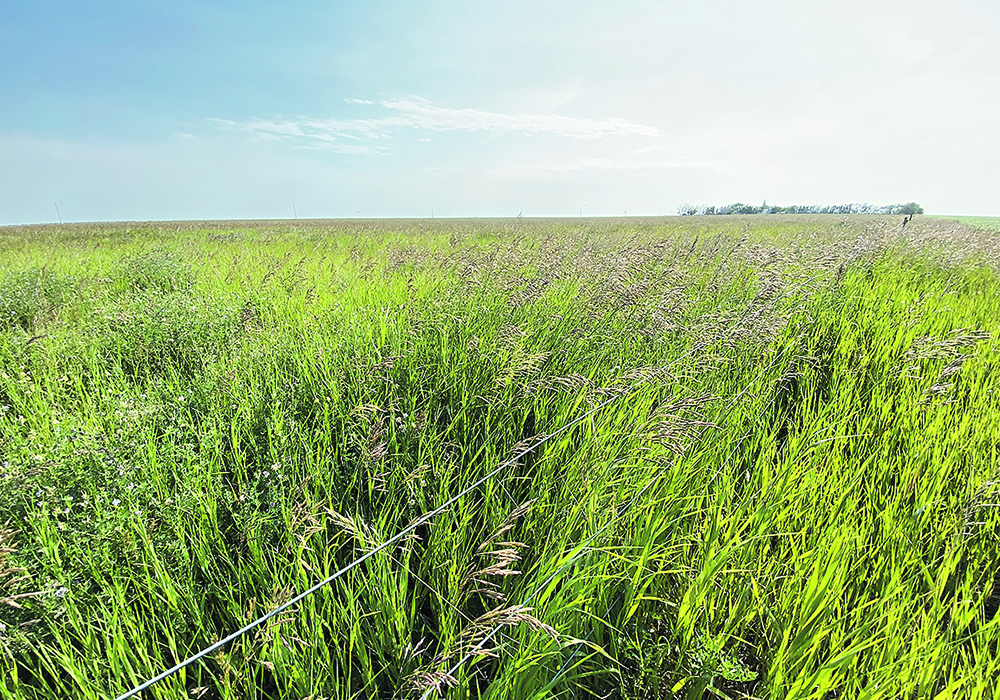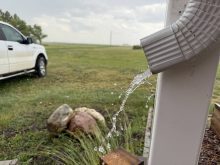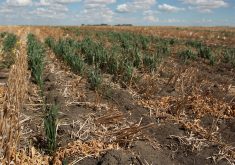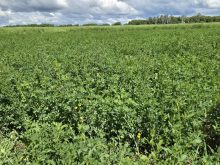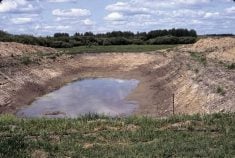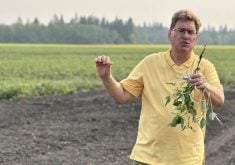The province establishes a drought command team to work on an emergency plan amidst the continuing drought threat
MEDICINE HAT — Alberta weather has faced dramatic swings recently, from record high temperatures in December to lows in January not seen in decades, but the threat of a devastating drought continues along the same trajectory.
Snowpack reporting stations along Alberta’s Eastern Slopes and from the headwaters of rivers that flow into the province from Montana continue to reflect well below levels.
Related story: Alta. plans for water shortages
The Oldman Dam reservoir has stabilized at 28 percent of capacity after gaining ground following runoff from the melting of what snow had accumulated before December.
Reservoirs fed by the Bow River have also improved going into the winter season.
However, the situation facing the St. Mary River Irrigation District continues to be challenging, particularly at the namesake reservoir, which remains below nine percent of capacity.
The challenging outlook has the Alberta agriculture minister calling on all residents of the province to understand their own role in conserving water to allow farmers to continue to grow crops.
Minister RJ Sigurdson said in a Jan. 11 statement that a drought command team has been established to work on an emergency plan.
Asked about that team’s makeup during a Jan. 12 media availability about funding agricultural societies, Sigurdson indicated it would include the ministers of three government departments.
“Of course, agriculture has a seat at that table; we’re working jointly with the minister of municipal affairs and, of course, led by the minister of environment,” he said.
Only one question each was allowed from the three reporters taking part in the media availability.
In Sigurdson’s earlier statement on the topic, he outlined the benefits of risk management programs offered through the Agriculture Financial Services Corp. (AFSC), specifically moisture deficiency insurance for tame and native forage.
Cardston-area rancher Robert Schmitke said that program can be problematic if precipitation recording stations are hit with an isolated shower that can distort the overall conditions in its coverage area.
“It’s really hit and miss,” he said of the program, noting the payout’s value is decreasing as input costs continue to rise.
Schmitke said the solution to warmer and drier conditions is adaptation of operations to the recently increasing incidents of drought. As well, concerns are now elevated as ranchers look at bare pastures with little likelihood of significant runoff.
“We had a lot more snow last year than we did this year already,” he said.
“Right now, we’re not in as good as shape as we were last year.”
There isn’t much the government can do outside of Band-Aid solutions such as the AgriRecovery program when what’s really needed is a good dousing rain event, said Schmitke.
Without such precipitation, “the cow herd is going to keep going down,” he said.
The ranching industry needs to adapt and adopt new technologies if it’s going to survive, he said, and the traditional methods utilized just aren’t going to cut it any longer.
One new method he’ll be looking to help with feed is working with the Lethbridge federal agricultural research centre on developing hydroponic grown barley fodder.
“I’m just looking at ways to survive without having the land base for a feed source and not overpaying for feed. Hay shouldn’t be where it’s at,” Schmitke said. “Silage and barley dropped this year and I’m feeding into the feedlot at 15 percent less than last year but the cow side of it is 30 to 40 percent higher on hay.”
Putting bulls on feed is another initiative that Schmitke said he’s adopting. With the right genetics, they can produce more weight with less feed.
But his overall message is the cattle industry needs to break out of the pattern of employing the same methods despite the changing conditions, especially in the face of environmental and market forces they can’t control.
Environment minister Rebecca Schultz announced Jan. 15 the government has awarded a contract to WaterSMART to conduct modeling on Alberta rivers.
The company will use data collected on rivers, snowpack and precipitation to develop an early warning system and to understand water availability in 2024.
WaterSMART will develop various scenarios the province may face if current conditions continue.


